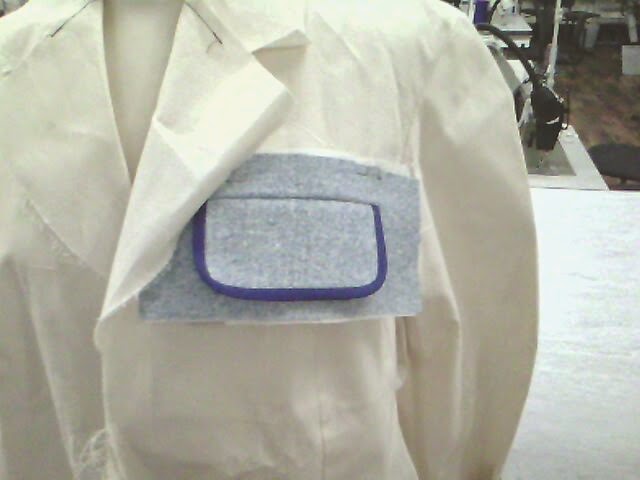 |
| The costume from Samson and Dehlia was probably going to be far too time consuming! |
 |
| Queen Amidala has some stunning costumes but this seemed to similar to what some of the other girls in the class were making. |
 |
| Again to make an exact replica would take too long because it is covered in diamantes. |
I decided to make a tutu, as I have never done this before. The costume from the movie 'Black Swan', was what I had decided to make, because it is beautiful yet distressed and wicked. The only down side to making a tutu, is that there is not a lot of help out there, in the way of reference books. I had no choice but to rely on snippets of information I could find on the internet and a book from the college library that dates back to the 1950's. People say that making a tutu is a dying art form, and no wonder because no-one seems to want to share the knowledge of how to make one.
| The Mulleavy Sisters that made the costume worn by Natalie Portman, began with white netting, into grey and then black. For the tutu underskirt. The book recommended 10 layers for the height of my model and 14" being the longest width. Each width requires at the 3 strips that can be then stitched together to make one continuous piece. Some of the top layers need 4 widths, stitched together. |
Once I had cut the netting, I put them into rolls with a scrap of paper pinned referring to the width size so that I would not get muddled up and put them in the wrong order when attaching them. One and a half was my smallest net width. I wanted to make the pants the classic way, many people these days make them in Lycra, but I used two layers of soft tulle.
To get the desired shape, I draped the fabric on the stand. They have to be deep to allow for the lots of layers that will be attached. As you can see I have over locked the two pieces of tulle together.
I found it best to make a paper pattern with lines running across them, where I want the netting to be placed. I then traced the lines on to the fabric with a vanishing line marker pen. I could now begin attaching the netting one at a time, with a zig-zag stitch, to allow the netting to stretch. Don't forget the laborious job of gathering the net.
You can see here the netting is taking shape nicely.
That's all 10 layers of netting, but there is still some more layers to go on top of this for the plateau.
Remember not to stitch the netting right to the edge of the pants, seam allowance has to be left so that, when you turn the tutu inside out you are able to stitch the pants together up the back.
This is the skirt laid out flat, you will notice that at the moment I have not closed the gusset. I want to be able to try this on my model to make sure she can pull it on, before I go closing it up and adding elastic.
The bodice I draped on the stand and on my model to get the shape right. The corset is made in 8 parts.
For the real bodice, I made it with a heavy weight stretch satin. I then used metal boning and made tubing for them to be inserted into and I then attached them along the opened seams. I put some plastic boning into the seam that curves along the bust, just to give some extra support.
Before attaching the lining I wanted to put the surface detail on first. To create this mottled effect I had a piece of faux leather bigger than the area it was to be attached to and put it in the oven until it showed signs of melting. This is not something I would recommend, it can give off fumes and it may also go disastrously wrong. When I took it out of the oven, I manipulated it whilst it was still warm to put it into the shape I wanted.
I then attached the fringe of iridescent coque feather behind it and stitched a piece of black lace over the other breast plate. Sorry the photo quality is not better. The lining can now be attached along the top of the basque.
I put two layers of black silk chiffon and distressed the ends to look all frayed before putting the final layer on top. I used this Halloween mesh and stitched a black ribbon around the edge.
I also made a casing for metal tubing to be applied into layer 7, to hold it up better.
The basque, which is just a piece of fabric cut on a curve the same measurement as the bottom of the bodice, can now be attached to the basque and tutu. As well as the lining to conceal everything.
I pleated black chiffon and hand stitched it to the bodice. Leaving the edges raw and distressing them by gliding scissors over them to give it a bad ass look.
I stitched some more coque feathers onto the top of the tutu. I purposely did not put them into the seam better the basque and tutu because I thought they may be uncomfortable for the wearer.
Final touches were the application of different sized and shapes acrylic stones, placed on the basque and on the tutu.
This is my sister wearing the costume, the photo was purposely taken at a derelict site to make it appear more menacing. I have not quite finished it yet, hence the skirt not being as flat as a pancake, hopefully I will find sometime to do this!












































